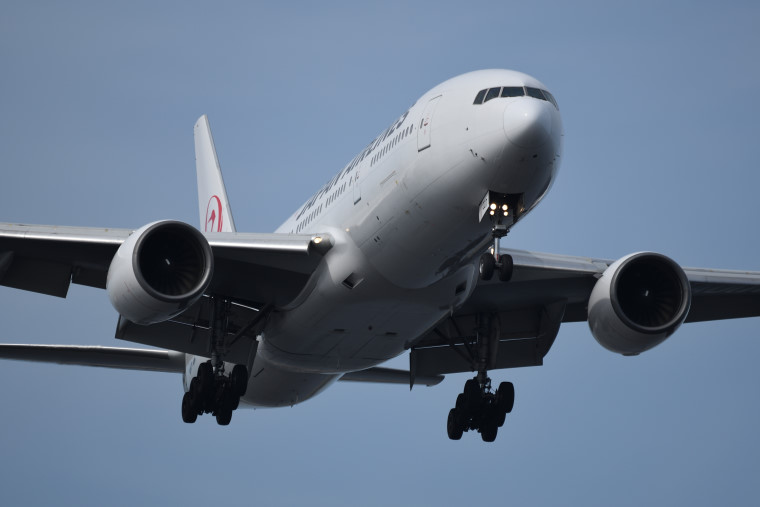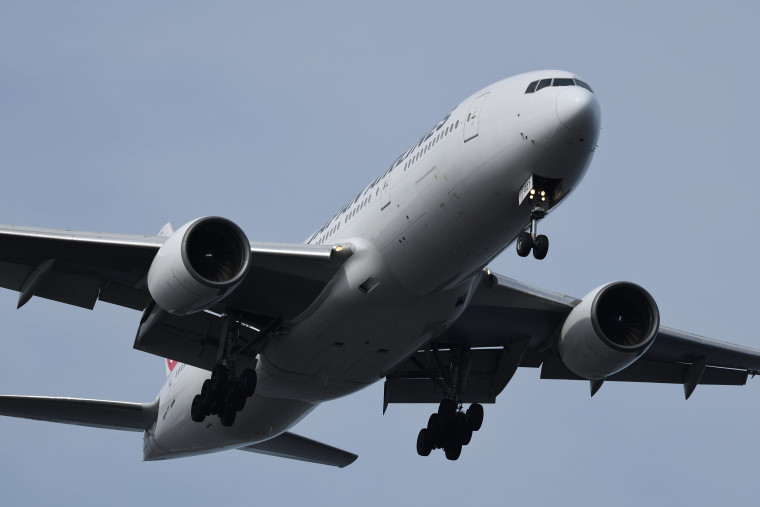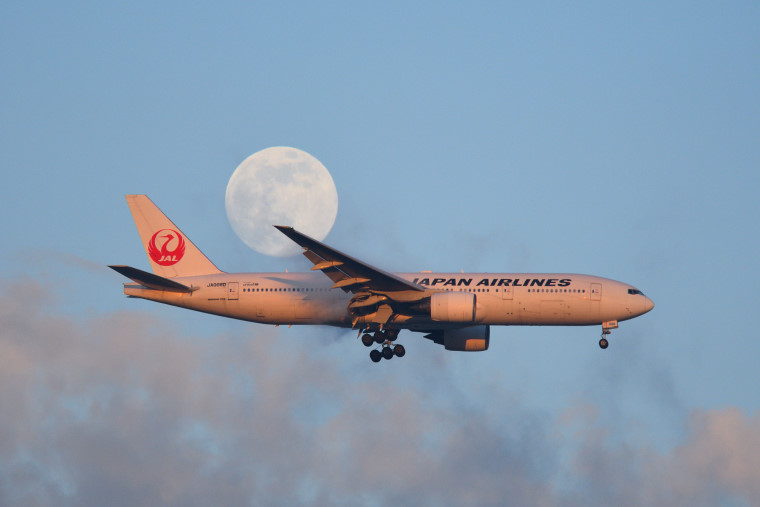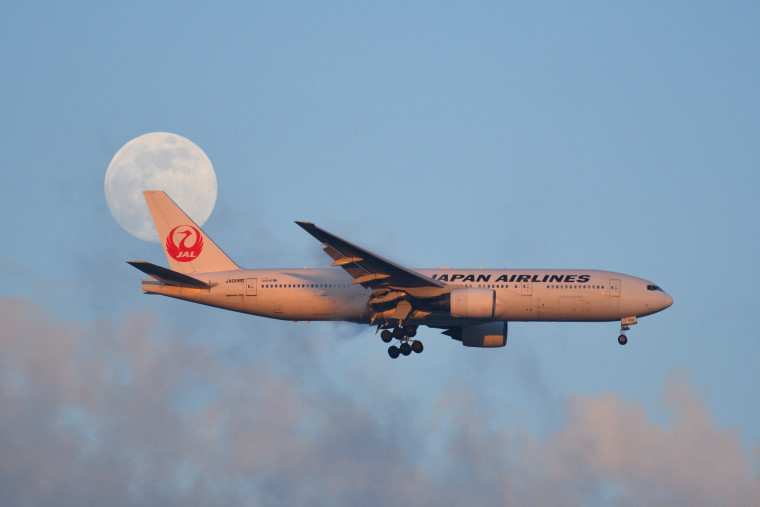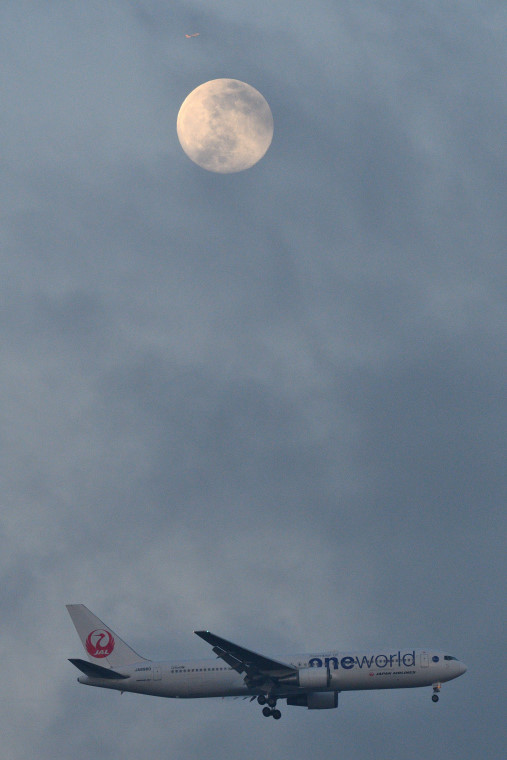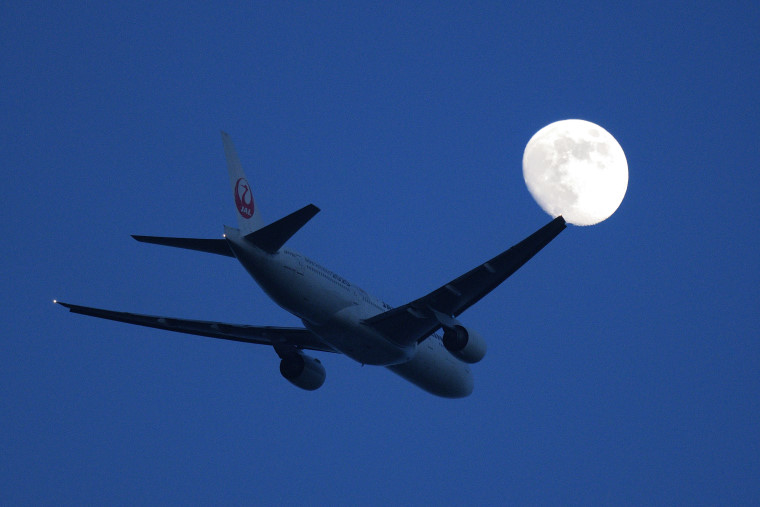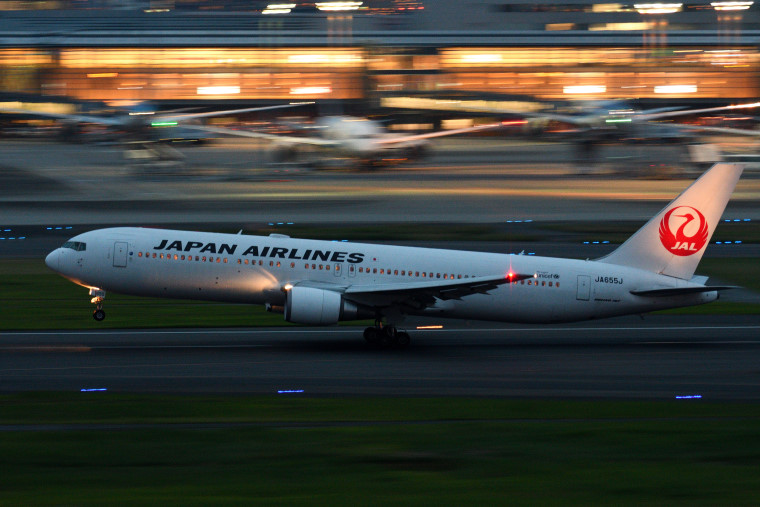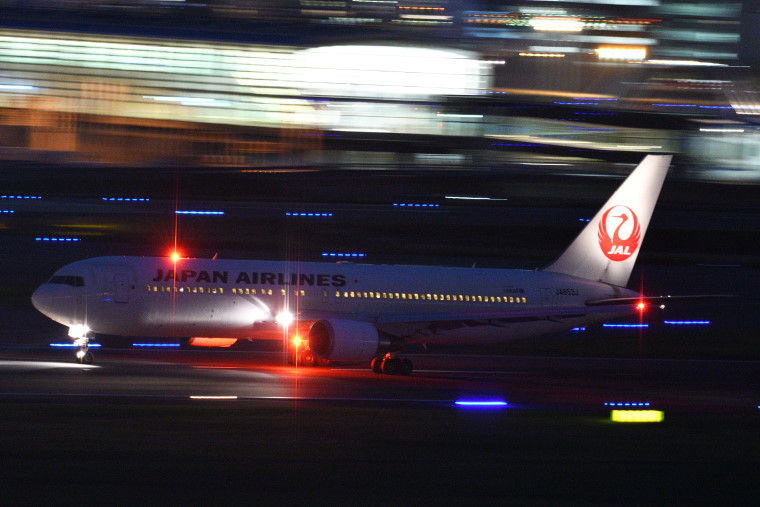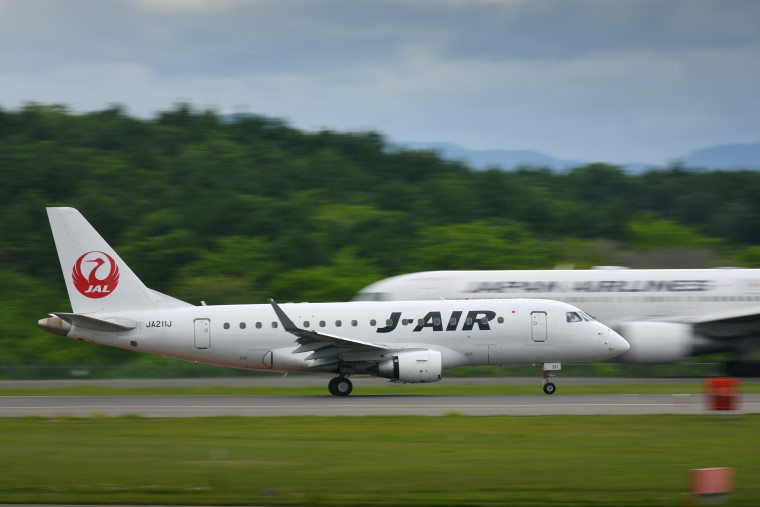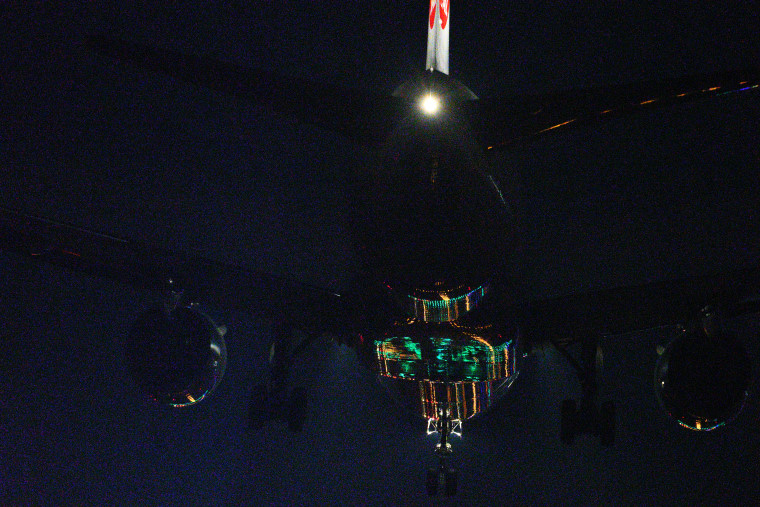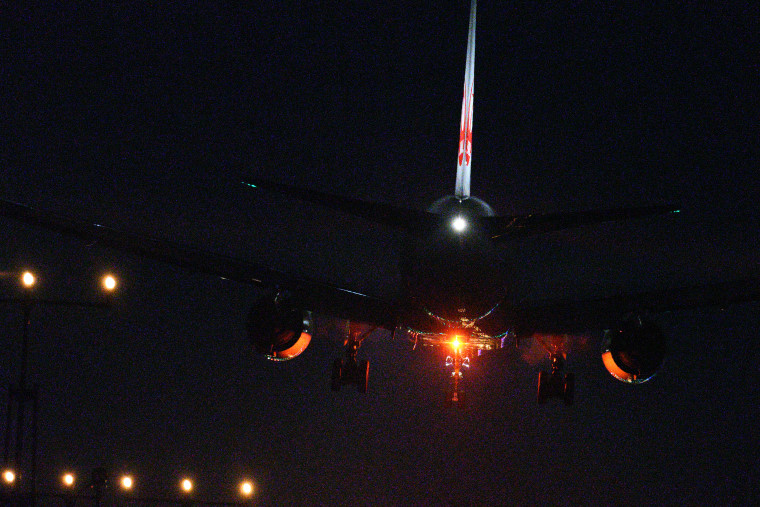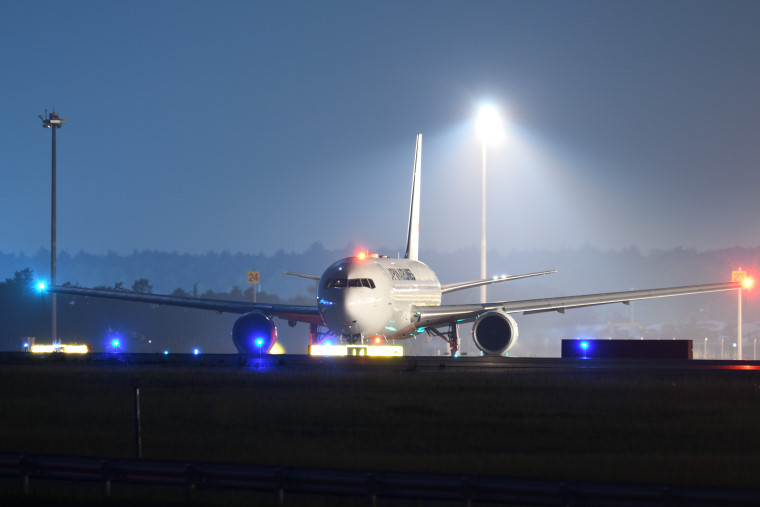Photographing Planes with a Super-Telephoto Zoom Lens
I photographed airplanes using an AF-S NIKKOR 200-500mm f/5.6E ED VR zoom lens that
covers the super-telephoto range. A notable feature of this lens is that covers focal
lengths up to 500 mm and yet is compact and light. On DX-format cameras the effective
focal length increases by 1.5× to 750 mm, making it an even better choice
for photographing planes.
Photos and Text
by KEN GOSHIMA (GOSHIMA Kentarō)
The Compression Effects of Different Focal Lengths
I photographed a distant airplane at 500 mm, switching to 240 mm as it got
closer to see how this affected the shape of the aircraft. At 500 mm, the compression
effect of the telephoto lens makes the plane seem much more massive. At 240 mm,
the compression effect is less noticeable and the plane seems longer. Given that the
same telephoto lens can produce different results, choose a focal length according
to your artistic intent.
Group-Area
AF
I used group-area AF for a composition that combines the control tower at Haneda Airport
with a plane on its approach to runway “B”. I chose the plane as the focus
point, and although it is on the edge of the frame, the camera was able to track it.
The emotional impact is heightened by the light of the setting sun on the control
tower.
Super-telephoto focal lengths make photos harder to frame, so
pay attention to keeping the verticals plumb and horizontals level so such elements
as the plane and the control tower appear stable. You can also deliberately tilt the
shot.
Capturing the Moon
and a Plane with Burst Photography
I used the 8-frame burst photography mode to photograph a plane as passed close to
the moon on its approach to runway “B” at Haneda Airport. As I wanted
to capture both the moon and the plane, I chose a fairly high setting for ISO sensitivity
(ISO 1000). The plane is lit by the setting sun with vapor trailing from its wings
for an effect that is both moving and dynamic. Precise timing is required to capture
both the face of the moon and the details of the aircraft, and camera position is
also important.
Examples
Using Aircraft
Example 10: Example 10 was taken shortly after Examples 4 through 9, and the moon
and the airplane are further apart. Landscape orientation would no longer do the job,
so I switched to portrait orientation. The fact that the plane leaves the frame quicker
makes it harder to shoot in portrait orientation than in landscape orientation. A
plane on its approach to Haneda Airport’s runway “D” is visible
above the moon.
Example 11: I photographed a plane on its closest approach
to the moon after taking off from New Chitose Airport. The photo was taken after the
sun had set but before it was completely dark, the last moment it would be possible
to capture both the face of the moon and the details of the plane. A super-telephoto
zoom lens was of great help when looking up to photograph a plane changing shape as
it passed by fairly closely overhead.
Panning
These are panning shots of a plane taking off from runway “A”, taken from
the deck of the observatory at Haneda Airport’s Terminal 1. These hand-held
shots were taken at slow shutter speeds: ¹⁄₄₀ s for the photo of the
plane taking off at dusk and ¹⁄₁₅ s for the night shot. How you stand
is important for hand-held panning shots like these. Before shooting, stand facing
in the direction the camera will be pointing after the plane has passed and shooting
has ended, and then twist your torso to aim the camera for the start of shooting.
This allows you to untwist during shooting, letting you shoot without undue effort.
Timing your shot for when the navigation lights are lit adds color for
a showy effect, although the timing can vary with the type of aircraft. Flashing lights
are often difficult to capture in a single shot, but burst photography can improve
your chances.
Panning During
Daylight
For panning shots in daylight, lower ISO sensitivity as much as possible. Choose a
setting one EV lower than normal and stop aperture down for the slowest possible shutter
speed. Neutral density filters and the like cannot be used, as the photos will be
framed in the viewfinder.
If the frame includes airplanes or other objects
moving in the opposite direction to the main subject, the opposing motion will help
increase blur for a more dynamic shot.
Ultra-High Sensitivity
Here are some shots taken from behind a plane landing at New Chitose Airport. Given
that I would be photographing the last flights of the day just after they had passed
directly overhead in the last moments of their approach, I chose an ISO sensitivity
of 51200 to keep shutter speeds as fast as possible. While some high-sensitivity noise
is visible, the shots beautifully render the details of the airplane and the reflections
of the lights to capture the power and the splendor of the landing.
Sample Shots of Airplanes
Example 18: I photographed a plane taking off against the setting sun. The silhouetting
of the plane against the light makes this a challenging shot but I was able to capture
the details without losing them in shadow.
Example 19: This is a full-length
shot of a plane waiting for takeoff, beautifully highlighted by the airport lights.
I chose an ISO sensitivity of 100 and mounted my equipment on a tripod.
Time Exposures
This 10-second exposure of a plane preparing for takeoff captures all the flashing navigation lights. The aircraft is highlighted by the beautiful glow of the landing lights and the lights on the plane’s body and wingtips.
The AF‑S NIKKOR 200–500mm f/5.6E ED VR brings you closer to the seemingly exotic
world of super high-telephoto photography. Boasting high resolution throughout its
entire range, it is nevertheless comparatively compact given its focal length and
can be taken into the field at will.
Photos
taken with the cooperation of Japan Airlines Co., Ltd.


